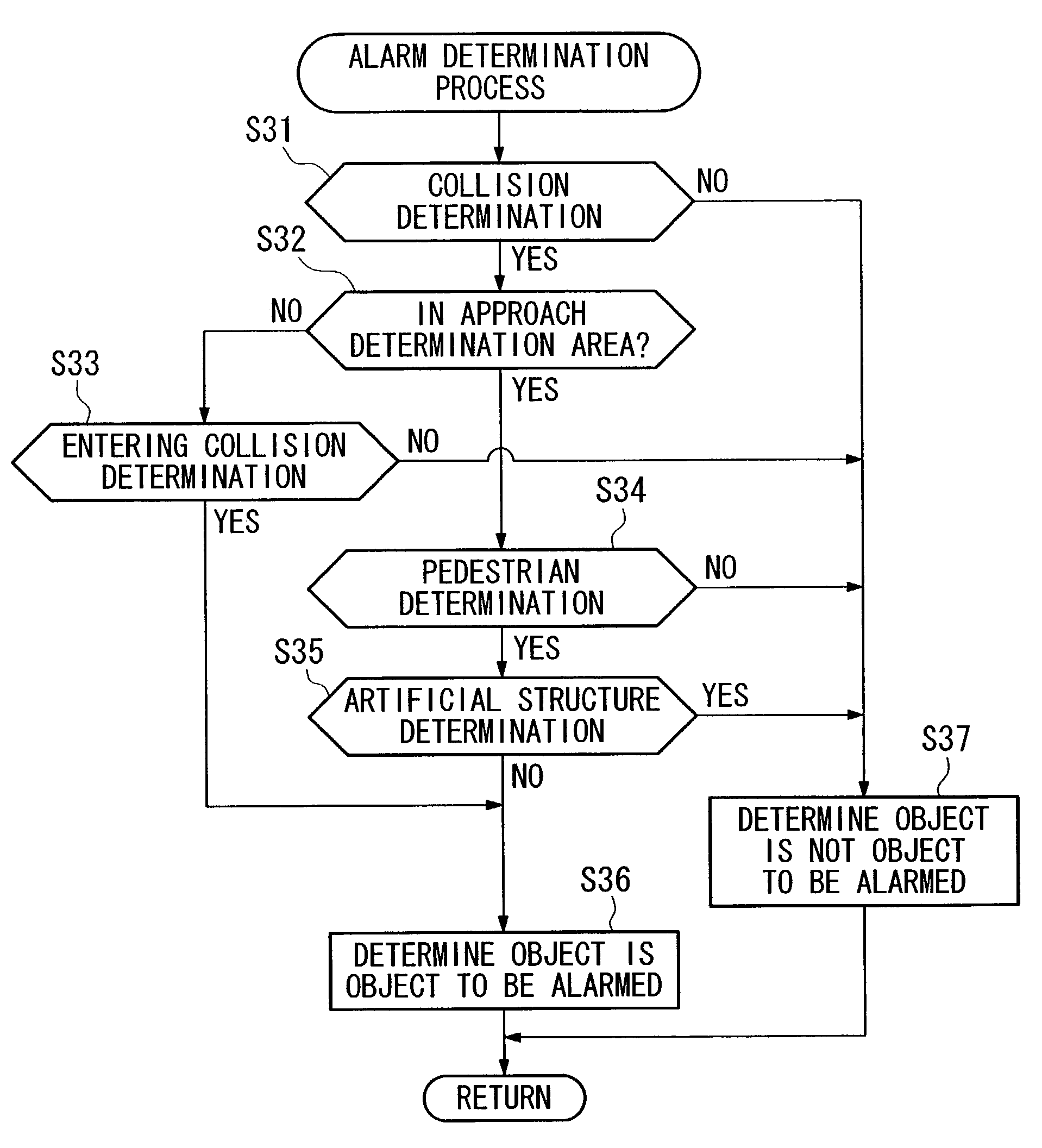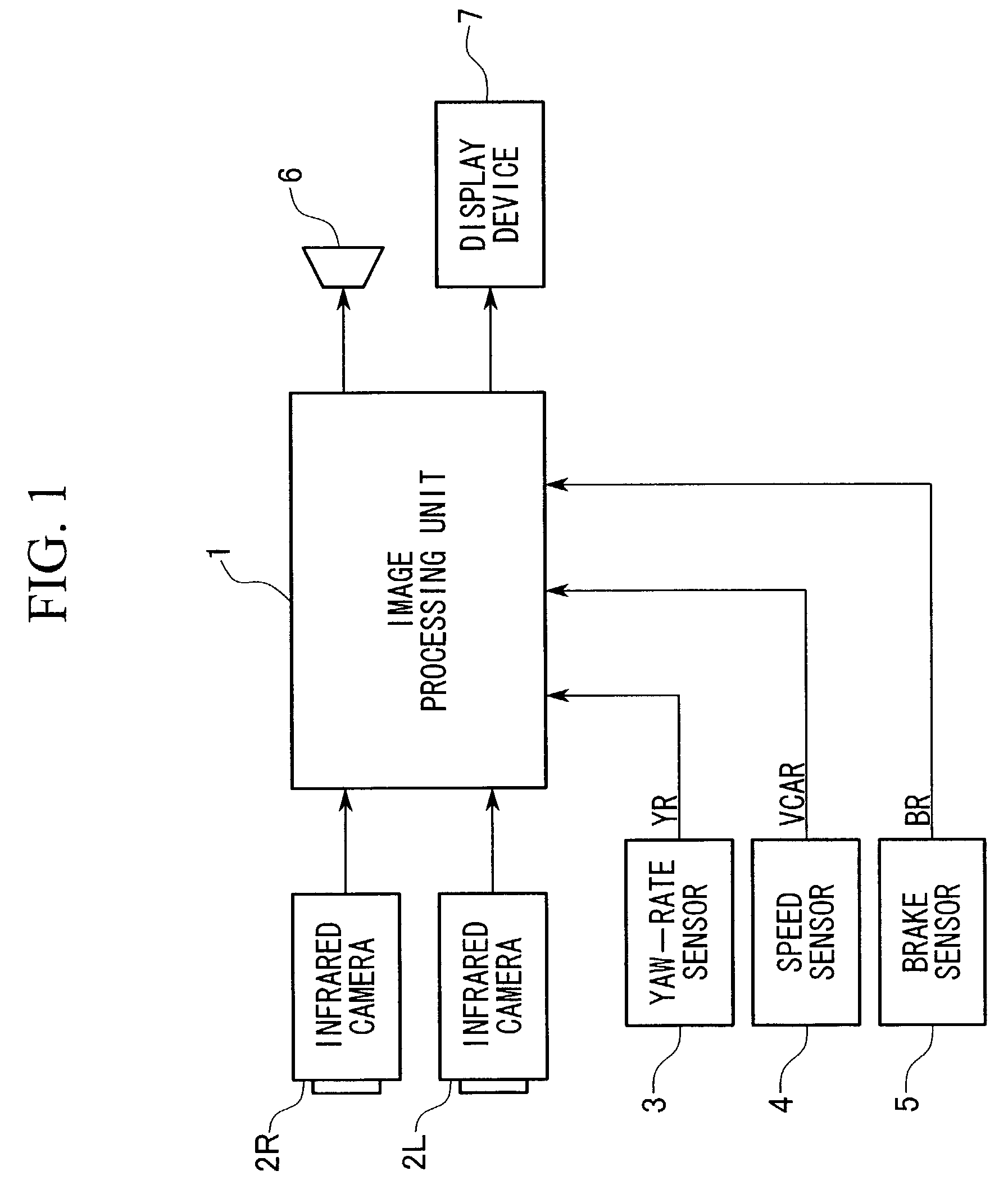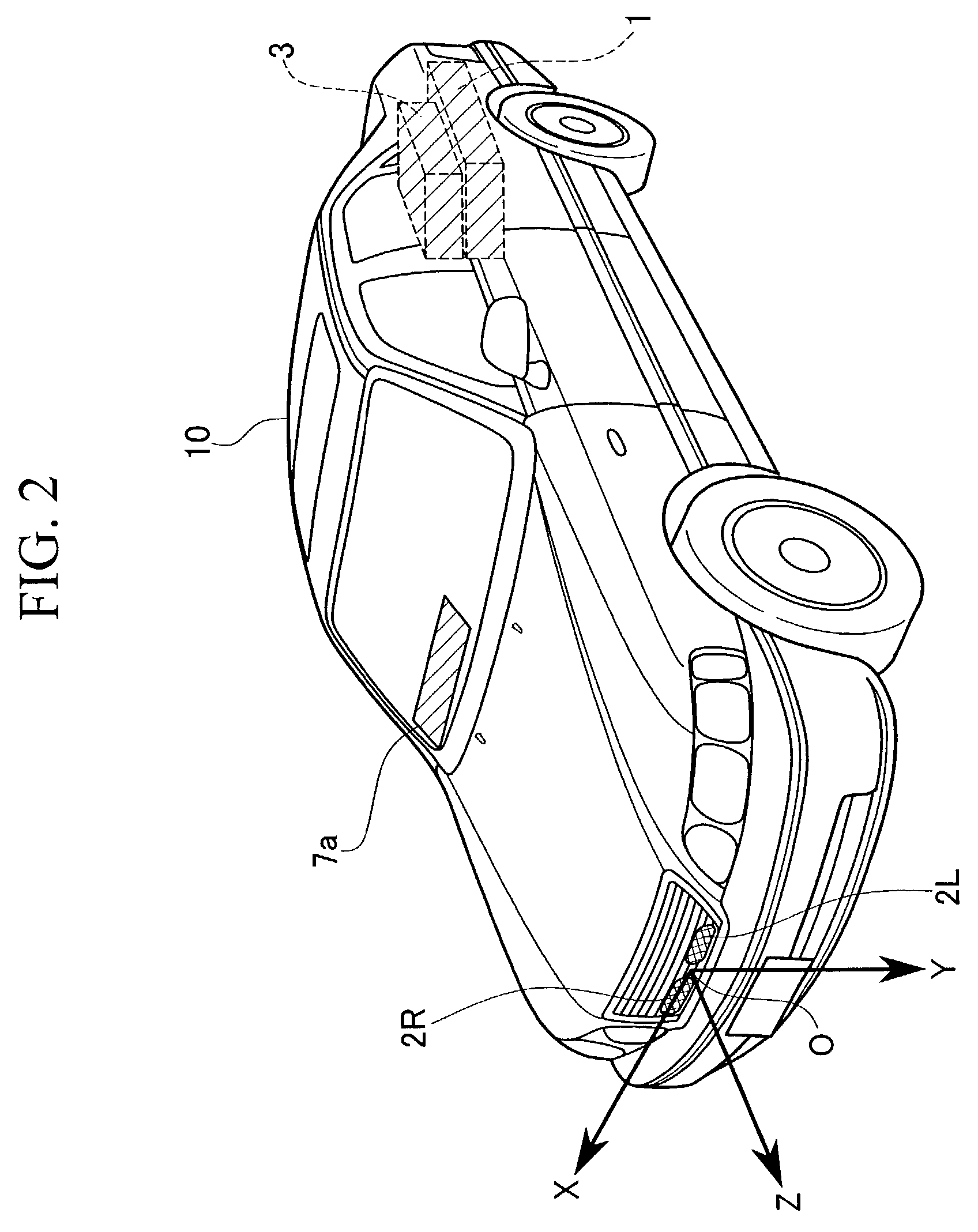Device for monitoring around a vehicle
a vehicle and monitoring device technology, applied in the field of vehicle monitoring devices, can solve the problems of ambiguous pedestrian shape obtained by binary thresholding methods, difficult to stably extract only pedestrians, and difficult to maintain only pedestrian extraction, so as to improve maintain the accuracy of detecting pedestrians.
- Summary
- Abstract
- Description
- Claims
- Application Information
AI Technical Summary
Benefits of technology
Problems solved by technology
Method used
Image
Examples
Embodiment Construction
[0050]The invention summarized above and defined by the enumerated claims may be better understood by referring to the following detailed description, which should be read with reference to the accompanying drawings. This detailed description of particular preferred embodiments, set out below to enable one to build and use particular implementations of the invention, is not intended to limit the enumerated claims, but to serve as particular examples thereof.
[0051]FIG. 1 is a block diagram showing a configuration of a device for monitoring around a vehicle according to an embodiment of the present invention.
[0052]In FIG. 1, the reference numeral 1 indicates an image processing unit including a central processing unit (CPU) which controls the device for monitoring around a vehicle according to the embodiment. To the image processing unit 1, two infrared cameras 2R and 2L capable of detecting far infrared radiations, a yaw-rate sensor 3 which detects the yaw-rate of the vehicle, a spee...
PUM
 Login to View More
Login to View More Abstract
Description
Claims
Application Information
 Login to View More
Login to View More - R&D
- Intellectual Property
- Life Sciences
- Materials
- Tech Scout
- Unparalleled Data Quality
- Higher Quality Content
- 60% Fewer Hallucinations
Browse by: Latest US Patents, China's latest patents, Technical Efficacy Thesaurus, Application Domain, Technology Topic, Popular Technical Reports.
© 2025 PatSnap. All rights reserved.Legal|Privacy policy|Modern Slavery Act Transparency Statement|Sitemap|About US| Contact US: help@patsnap.com



